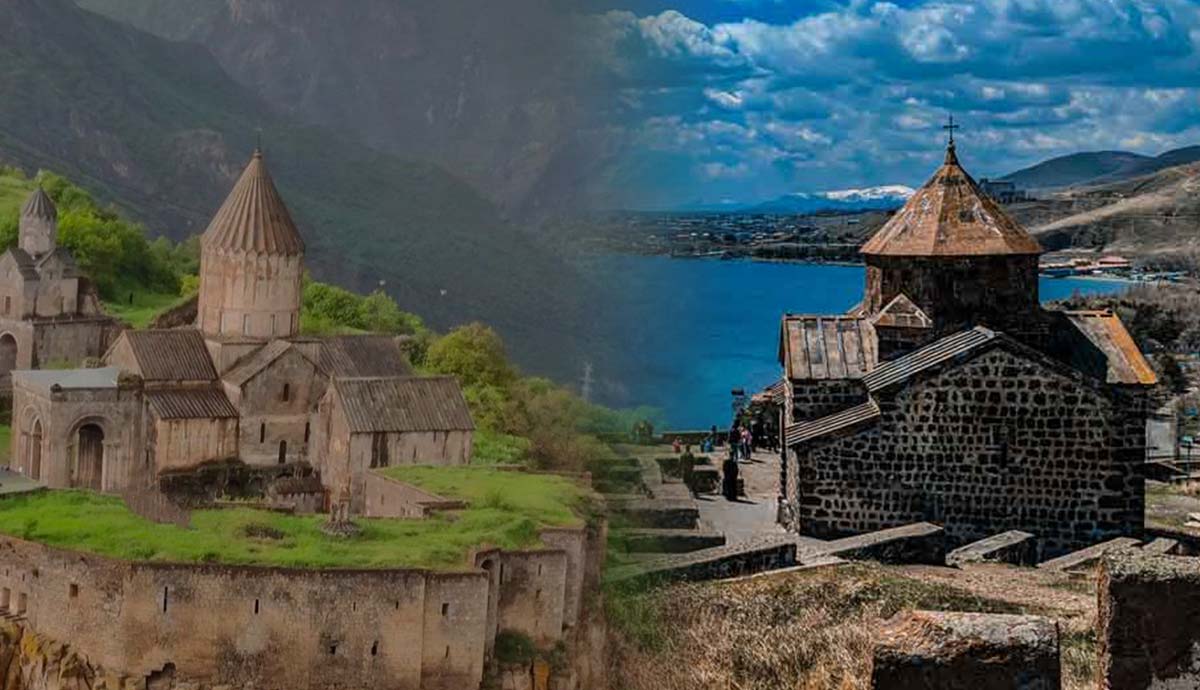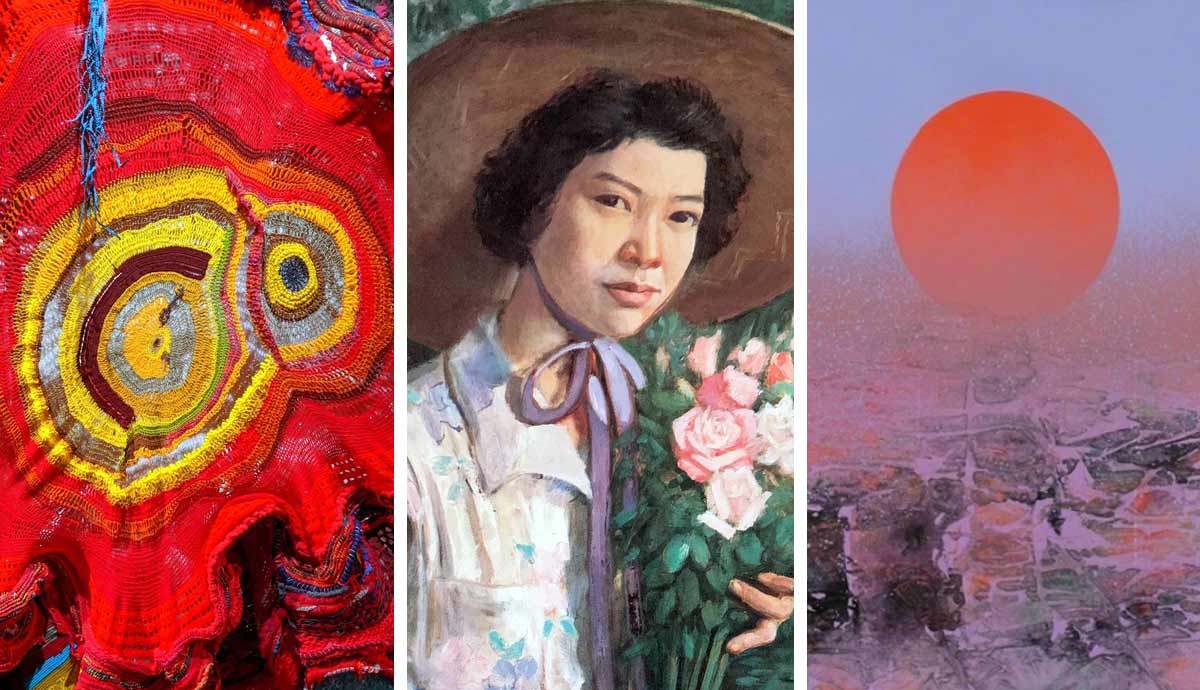
Any trip through Armenia and Georgia will offer you many opportunities to sample delicious wines from the various vineyards and some questionable wines from home-brewing cellars. But while taking a tour, it is interesting to discover a little more about the history of wine production in both countries and try to uncover which country produced wine first.
The History of Wine Production in Armenia

Armenia boasts one of the oldest winemaking traditions in the world, with a history that intertwines deeply with the development of viticulture. The history of Armenian wine production can be traced back thousands of years, highlighting the region’s pivotal role in the early development of winemaking.
Ancient Beginnings
Archaeological evidence points to Armenia as one of the earliest sites of grape cultivation and wine production. The discovery of the Areni-1 cave complex, located in the Vayots Dzor region, provides compelling evidence of ancient winemaking.
In 2007, a team of archaeologists uncovered a 6,100-year-old winery in this cave. The site included fermentation vats, a wine press, storage jars, and even a cup and drinking bowl, all indicating the production and consumption of wine. It is possible to visit this site, a top recommendation for any wine enthusiast so they can see, first hand, where one of the oldest wineries in the world was. It happens to be in the modern-day wine region of Armenia, and there are many beautiful wineries to stop off at nearby and sample some of the delicious wines they have on offer.
Viticulture and Winemaking in Antiquity
Viticulture in Armenia dates back to around 8000 BCE and the Armenian Highlands are believed to be one of the origins of the vitis vinifera grapevine, the primary species used in winemaking. Many wine producers around the Areni-1 cave continue to use subspecies of this grapevine to produce their wines today. The region’s favorable climate and terrain provided ideal conditions for grape growing. Ancient manuscripts and artifacts suggest that wine was an integral part of Armenian culture, used in rituals, celebrations, and daily life.

Middle Ages and the Silk Road
During the Middle Ages, Armenian wine continued to thrive, benefiting from Armenia’s strategic location on the Silk Road. This trade route facilitated the exchange of goods and culture between East and West, and Armenian wine was traded and appreciated far and wide. Monasteries played a crucial role in preserving and advancing viticultural knowledge and winemaking techniques. Monastic winemakers maintained vineyards and produced high-quality wines, some of which were used for religious purposes.
It is therefore vital that anyone visiting Armenia should visit the monasteries too, in order to get a complete picture of the cultural and religious significance of wine. One of the most magnificent wine-producing monasteries in the Areni region is the Noravank Monastery, and well worth a visit!
Ottoman Period and Modern Challenges
The Ottoman Period posed significant challenges for Armenian winemaking. Despite restrictions and hardships, Armenian winemakers persisted, often producing wine in secret. The genocide and subsequent diaspora of Armenians in the early 20th century had a profound impact on the country’s wine industry, leading to a significant decline.
Soviet Era
During the Soviet Era, Armenia’s wine production was largely geared toward quantity over quality, with a focus on brandy production. However, the country still produced notable wines, and Armenian brandy gained international acclaim. State-run wineries dominated the industry, and traditional winemaking practices were often sidelined in favor of mass production.

Post-Soviet Revival
Since gaining independence in 1991, Armenia has experienced a renaissance in wine production. The revival has been fueled by a combination of the returning diaspora, foreign investment, and a renewed interest in traditional winemaking methods. Modern Armenian winemakers have embraced both ancient techniques and contemporary innovations, focusing on quality and the unique characteristics of indigenous grape varieties such as Areni, Voskehat, and Khndoghni.

Contemporary Armenian wine
Armenia’s winemaking tradition is one of the oldest in the world, with roots that stretch back over six millennia. Despite numerous challenges throughout its history, Armenian wine production has endured and evolved, emerging today as a symbol of the country’s resilience and cultural heritage. The revival of Armenian wine not only celebrates the ancient past but also looks forward to a promising future in the global wine industry.
The History of Wine Production in Georgia

Georgia, often referred to as the “cradle of wine,” boasts a rich and ancient history of wine production that spans thousands of years. The country’s winemaking tradition is deeply ingrained in its culture, and archaeological evidence supports its claim as one of the earliest regions to domesticate grapevines and produce wine.
Ancient Beginnings
The history of Georgian wine production dates back to around 6000-5000 BCE. Archaeological discoveries have uncovered evidence of early winemaking in the form of qvevri (large clay vessels used for fermenting and storing wine) found in the village of Shulaveri. These qvevri contained grape seeds and residue, indicating the early practice of winemaking.
The Qvevri Tradition
One of the most distinctive features of Georgian winemaking is the use of the qvevri. This ancient method involves fermenting and aging wine in large, egg-shaped clay vessels buried underground. This technique, which has been passed down through generations, imparts unique characteristics to the wine and is recognized by UNESCO as part of the Intangible Cultural Heritage of Humanity. The qvevri method allows for natural fermentation and has become a symbol of the Georgian winemaking tradition which is still used today. When visiting Georgia, a trip to Kakheti is vital if you want to see this ancient method firsthand.

Viticulture in Antiquity
By the Bronze Age, viticulture had become well-established in Georgia. The country’s favorable climate and diverse terrain, from the coastal regions to the mountainous areas, provided ideal conditions for grape growing. Ancient texts and artifacts suggest that wine was an integral part of Georgian society, used in religious ceremonies, social gatherings, and daily life.
Medieval Period
During the Medieval Period, winemaking continued to flourish in Georgia. Monasteries played a crucial role in preserving and advancing viticultural knowledge. Monastic vineyards produced high-quality wines, which were often used for religious purposes and in royal courts. Medieval Georgian literature and poetry frequently referenced wine, highlighting its cultural significance. One of the monasteries still producing wine in the Kakheti region is the Alaverdi monastery. Here you can witness the wine being produced by monks and buy some of their delicious wines.
Ottoman and Persian Influence
Despite invasions and occupations by the Ottoman and Persian empires, Georgian wine-making traditions persisted. Although these periods posed significant challenges, including restrictions on alcohol production, Georgians maintained their winemaking heritage through clandestine production and the preservation of traditional practices. This is possibly the reason why many people still produce their own wine today. You can, still to this day, buy liters of homemade wine on the side of the road if you dare!
Soviet Era
Under Soviet rule, Georgian wine production was industrialized and focused on quantity over quality, much like in Armenia. State-run wineries dominated the industry, and traditional methods were often sidelined. However, Georgian wine remained popular in the Soviet Union, and the country was a major supplier of wine to other Soviet states.

Post-Soviet Revival
Following the collapse of the Soviet Union in 1991, Georgia experienced a renaissance in winemaking. The revival was marked by a return to traditional methods, including the widespread use of qvevri, and a renewed focus on quality. Small, family-owned wineries began to emerge, and Georgian winemakers started to gain international recognition for their unique and high-quality wines.
Contemporary Georgian Wine
Today, Georgia’s wine industry is thriving. The country is home to over 500 indigenous grape varieties, with Saperavi (red) and Rkatsiteli (white) being among the most prominent. Georgian wines are celebrated for their diversity and distinctiveness, with both traditional qvevri wines and modern styles being produced. Wine tourism has also grown significantly, attracting visitors eager to explore the rich history and culture of Georgian winemaking.
So, Who Produced Wine First?

The question of which country made wine first, Georgia or Armenia, is a subject of ongoing debate among archaeologists and historians. Both countries have strong claims based on archaeological evidence and historical records.
Georgia’s Claim
As previously mentioned, Georgia is often referred to as the “cradle of wine.” The country has archaeological evidence suggesting that wine production dates back to around 6000-5000 BCE. Discoveries in the village of Shulaveri include qvevri which contained grape seeds and residues, indicating early winemaking. The use of qvevri has been passed down through millennia and is a significant part of the country’s winemaking tradition.
Armenia’s Claim
Armenia also has a compelling claim to being one of the first winemaking regions. The Areni-1 cave complex, discovered in the Vayots Dzor region, contains evidence of a 6,100-year-old winery, which includes fermentation vats, a wine press, storage jars, and even a drinking bowl. This discovery is one of the oldest known wineries in the world and suggests that Armenians were making wine around the same time or even earlier than the evidence found in Georgia.

Current Understanding
- Georgia: The evidence of winemaking in Georgia dates to around 6000-5000 BCE with the discovery of ancient qvevri.
- Armenia: The Areni-1 cave complex, dating to approximately 6100 BCE, contains some of the earliest definitive evidence of a complete wine-making setup.
While the exact timeline remains a topic of debate, it is generally accepted that both Georgia and Armenia are among the earliest regions to develop winemaking, with each having significant archaeological evidence to support their claims. The precise determination of “who made wine first” might not be conclusively resolved, but it is clear that both cultures have ancient and rich winemaking traditions that are among the oldest in the world, and therefore it is important for any wine lover to go back to the source and enjoy a glass of wine in either of these beautiful countries.










